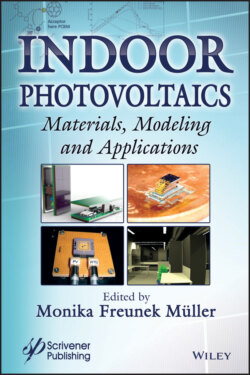Читать книгу Indoor Photovoltaics - Группа авторов - Страница 31
2.8 Conclusions and Outlook
ОглавлениеThe use of ambient energy to power low-power electronic devices seems like a natural choice today. This chapter presented the most common types of generators other than photovoltaic converters, their sources of energy, and typical output power levels for indoor applications. From these, kinetic converters including micro turbines and thermoelectric generators are the most mature generators. Commercial products are available on the market, and the output power range is the highest discussed in this chapter. While some of the converters and applications presented in the sections above might seem exotic, and are elaborate in their fabrication or too unreliable for use in commercial products, micro energy harvesting is a valid approach to power IoT edge nodes and applications and a standard in space applications. The appropriate type of generator, its detailed design and the overall design of the IoT edge node depends on the application. Does the system only need to send data at certain events? Does it have to be constantly available or are delays or even outage times allowed? Is the ambient energy easy to predict in its frequency of occurrence and level or is a battery part of the system? A reliable micro energy harvesting system requires a design specific to its application and as a whole system, including its data storage, processing and communication units. An example are kinetic converters, which are tuned to a certain frequency. The need for this application-specific design limits economic mass production effects. Especially when the systems aim for miniaturization, standardized circuit boards that are produced on a mass scale for different product lines cannot be used in micro energy harvesting.
An exception to this, with power levels as high or above the ones presented so far, is indoor photovoltaics, which is introduced in detail in the following chapter.
